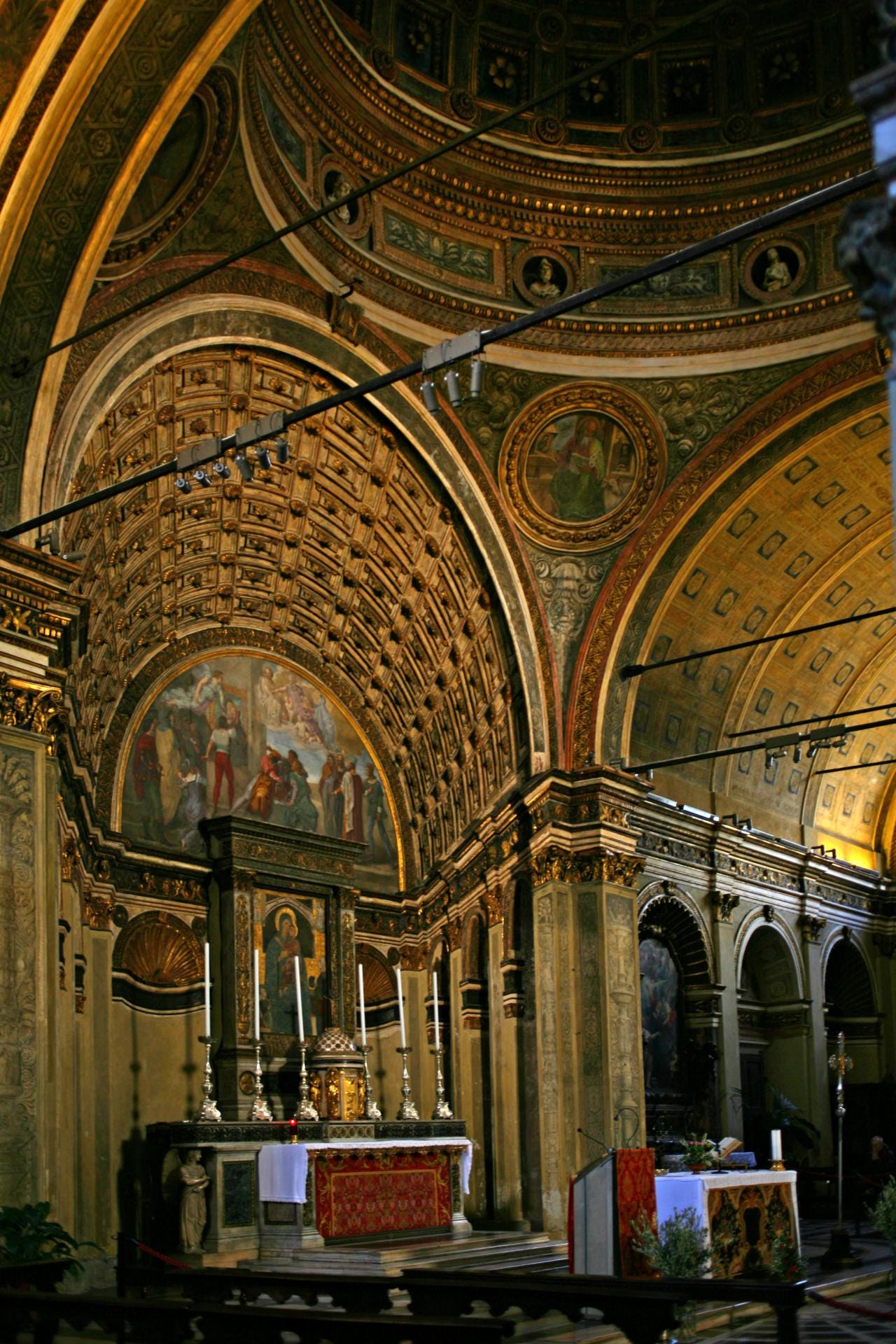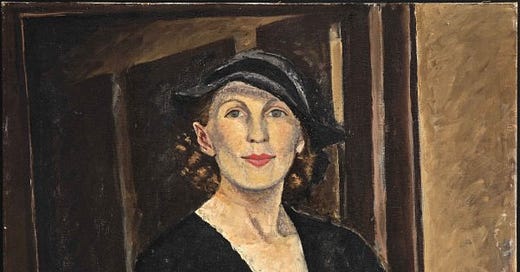Let Me Show You Something Beautiful
When I can't make out the path, beauty lights my next step. Especially when someone shares it with love.

If not for the woman in black, I’d have no memory of my visit to the Church of Santa Maria presso San Satiro. I was killing time in Milan when it appeared behind a wrought-iron gate, the kind that once shielded the mighty from the low. The woman stood in the doorway as if she’d been waiting for someone. She asked in lilting English, “Would you like to see the church?”
On my travels I had met fast talkers who flock to starred sites on maps and ding you for a spiel they cribbed from Fodor’s in those pre-internet days. Let this woman find another mark. “Sorry, I’m not purchasing a tour.”
In stately middle age, she wore stiletto heels and auburn curls that tumbled to her shoulders. Her single-breasted coat would have suited Audrey Hepburn before it sagged from years of wear. The swirl of orange and gold at her neck might not have been silk, but she knew how to drape a scarf.
“This church is my favorite place in all Milan,” she said. “It’s a little jewel. I would like to show it to you.”
I had arrived at the church with stones on my heart. The Museum of Torture, a collection of instruments designed to kill slowly, ghoulishly and publicly, will have that effect on any visitor in possession of a heart. Imagine, for instance, the hanging cage, in which starving victims hung from a gibbet above the town until nothing remained of them but bones clutching the air. The device was not retired until the late 18th century, supposedly the Age of Enlightenment. After my tour of the museum, I wanted to fall on my knees and beg the judges of the tortured dead for mercy.
I still flinch at the memory of my visit to that chamber of cruelty. Anne Frank wrote in her diary, not long before she was sent to her death, “In spite of everything, I still believe that people are really good at heart.” The hanging cage reminded me that Anne Frank was wrong. It revealed the deep, knotted roots of the evil that killed Anne and has been killing multitudes forever.
I paid to see the agony that humans inflict on one another. The little jewel would be a gift from a stranger I had misjudged.

I followed my self-appointed host into an extravagance of gleam and glitter. We had stepped inside a treasury of jewels. It might as well have occupied the innermost corner of a palace. Beside the woman in black, I felt like the honored guest of royalty.
The Museum of Torture had burned my eyes and shredded my concentration. I didn’t know what to make of the 15th-century church so dear to my guide. Frescoes galore, gilded arches and columns everywhere.
A work of art, like a person, has a story and a spirit. Some sidle up as if they’ve known you all their lives. And in a sense they have, through posters, mugs and fridge magnets. A Vermeer envelops you in radiant stillness; a Monet seduces with veils of color. When art doesn’t speak your language, an interpreter comes in handy.
My host apologized for her perfect English, but what she really spoke was Art. She drew my attention to the soaring space behind the altar. You’d never guess it was only three feet deep. The architect, Donato Brabante, faced a monumental challenge: an absurdly tiny site for his church. The faithful expected a commanding focal point around the altar; Brabante had no room to deliver. So he created an optical illusion, a trompe l’oeil painting on a flat terracotta surface.
A guidebook, had I brought one, could have given me the 101 on Bramante’s tour de force. The art whisperer gave me the animating passion. Her slender hands flew as she unveiled the illusion. Stand here and you see it, stand there and you don’t. She told me she taught art at a nearby secondary school. Every day at lunch hour, she came to the church in the hope of sharing its beauty with someone. That day in the early 1990s, I was the lucky one.
My father was an artist who worshipped at the altar of beauty. His ardency perplexed me, at times to the point of shame. Any friend of mine who came to dinner would be asked, with an appraising stare that commanded the lowering of forks, “Tell me…. What is beauty?”
Some cracked a joke, others waxed philosophical. They couldn’t tell that my father was in his cups, only that they had failed the test. He might have accepted “Beauty is truth, truth beauty,—that is all/ Ye know on earth, and all ye need to know.” My friends quoted Bob Dylan, not Keats.
I don’t recall the answer my father used to declaim, only how irrelevant it seemed in my world. My country laying waste to Vietnam and sending its young men home in coffins. Four Black schoolgirls murdered in the bombing of an Alabama church. The question on my mind was not about beauty. I asked myself relentlessly, “What is justice and where has it gone?”
Sixty-odd years later, I’m still asking what became of justice. The news has become a hanging cage where the powerless die clutching air as the privileged go about their business. Beauty fixes none of this.
I had all but forgotten my father’s question when the answer appeared, like the woman in black one autumn day in Milan. Beauty invites me to marvel instead of charging through. It’s the flare of awe that lights my next step forward when I can’t make out the path. Some create beauty, some reveal the creations of others. The most beautiful thing I saw inside Donato Bramante’s church was not the master’s work. Opulence is not for me, to be honest. I look back on a golden blur. But I still see my guide’s darting hands, her red lipstick shining as she smiled. The moment that held us billowed like a wave sweeping toward forever. I gave myself up to love.
Has a stranger ever given you a moment of the purest magic? I’d love to know.
I forgot to ask the name of the woman in black. What she did for me is what I strive to do for you, week after week. Every thoughtful comment tells me I’m on course and propels me into the next essay. Most of you know my name; some of you read each post right away. I can count on you to show up, as you count on me. Talk about a thing of beauty.
Oh, one more thing: You’ll find more about beauty over here in “A Melancholic’s Guide to Happiness.” Poke around to your heart’s content. All my essays are free to read and share.





Rona, I'm taken with your observation that when we leave a comment we are doing something not entirely different from the woman showing you the church. Commenters can sometimes reveal something about a writer's piece that the writer didn't think of. And what is more trompe l'oeil than words on a screen that show us a three dimensional scene?
How amazing that she waited there each lunchtime to share that hidden treasure! I'd have loved that. When I learned about trompe l'oeil in art lessons at school, and then saw the violin and bow at Chatsworth House in Derbyshire, I was mesmerised!